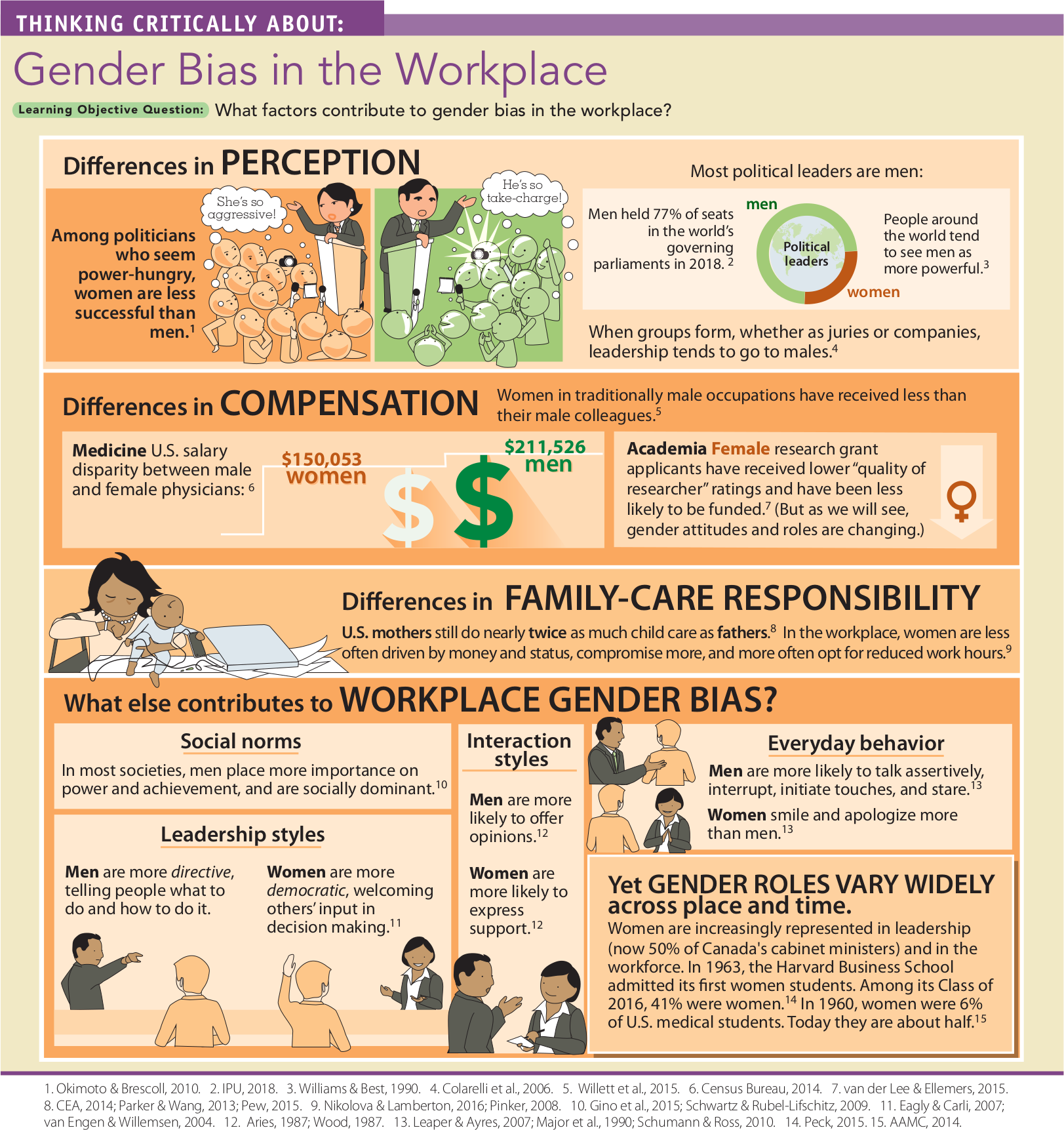Chapter 6. Gender Bias in the Workplace
Infographic
Infographic Activity
by David Myers and Nathan DeWall
true
true
Thinking Critically About: Gender Bias in the Workplace
Around the world, there are gender differences in power. In the workplace, multiple factors contribute to gender bias.
Quiz
Quiz
1.
bq6incXycdP+UJdzNL1s61ID7otoOTEaJnB2G6+JPQtvmYpQwkN5WmhgjCUPKvFr+hVfMBBurpgS19Q2y/M5rPD2hJ1C/II3tNO21zHWFzwmKydZHBtkT9XlJ/Bg92+aMd1jKyj3iGkzLn840u9+DG6lSok/iUd3rZe0ew==Men occupy most elected political positions, have earned higher salaries in traditionally male occupations, and contribute less child care.
2.
Ar21NqseChVXVnHtnWkt28/yzSSeAwXKf3bR52Hz59kioJt4ulmoipOMutrViEkeq09tfZ6rDO91uCZ/K9QuZvEbxSslWqVzcgI/g8ovyoVaYCPf
Perceptions: The same behavior from “take-charge” men may be seen as “aggressive” in women. Norms: In most societies, men more than women strive for power and achievement. Leadership style: Men tend to be more directive and opinionated, and to speak assertively, women tend to be more democratic and supportive, and less interruptive.
3.
qVuPoEb3Yj6tJoKel19Z7G0Gzwy7Sh/c/+eC2kPtIHz9fO6O9Dzm4pGVdsfX7JMHzSIUAr4gklLs+dtAO4yHkMM3pTtbAP/SmlmB0V2QKhKLu07rPNw/Qj2QKRxkJqQ5tU+oa/tr2kjTXB+k+A5iVXmqsGmRpdLT0UXmgVVcFykt8JbA0V3F5QUd88d6kirhY6NbBZv4wNzg4Phj8hBzq2Zi6rw96jmxkyy+GwcUiYw=Gender roles vary over time and across place and in many cultures have become more equal.
